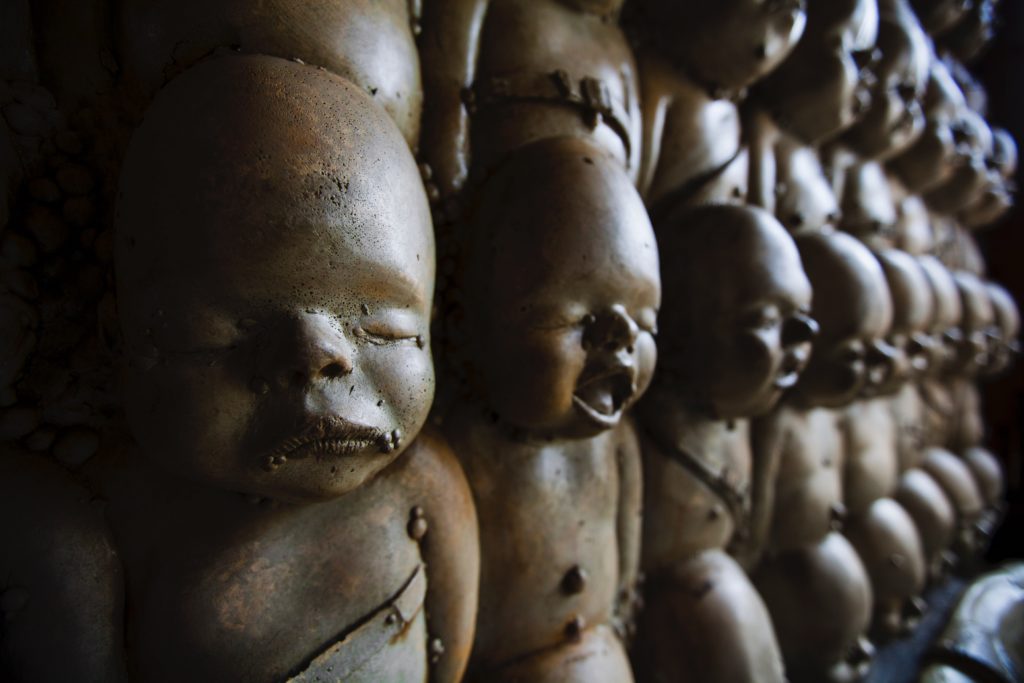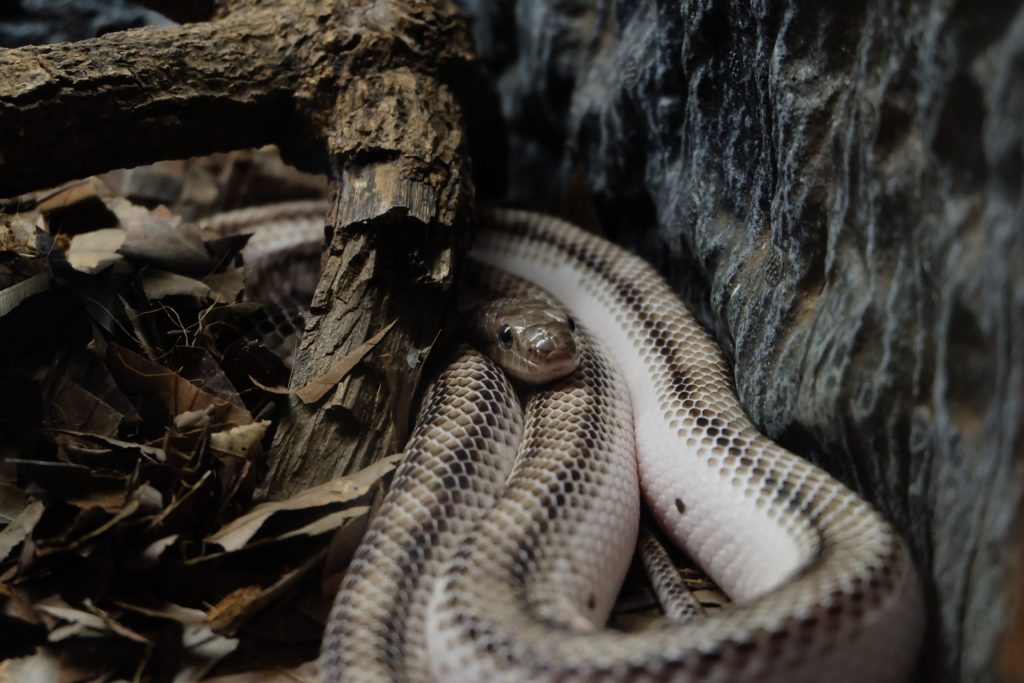Oz Perkins’s latest horror project reignites a Grimm look on life
Oz Perkins, director/writer of horror films “I Am the Pretty Thing That Lives in the House” and “The Blackcoat’s Daughter,” released his latest project in the genre on January 31st with “Gretel and Hansel.” It’s an even darker spin on the original Brothers Grimm tale that follows brother and sister, Hansel and Gretel respectively, as they get lost in the woods and stumble upon a house made of candy. Perkins’s film focuses more on Gretel’s story (hint the name) and her strange attachment to the eerie woman that has taken them under her wing.
“Hansel and Gretel” is a household name but how many people actually know how the story goes? Are people aware that the witch that lured the children into her home to fatten them up intentionally so that she can feast on their flesh? Do they know that Gretel turns the tables on the witch and pushes her into the fiery oven that was originally meant to cook the children?
Hopefully this makes you curious as to what other grisly facts lie in the stories told by the famous German brothers. I can tell you know that they don’t all end in “happily ever after…”
The Pied Piper

If you’re familiar with “Shrek: The Musical,” then your interpretation of the Pied Piper is a grumpy man that just wants his rats to dance. Unfortunately, the truth is not nearly as endearing.
“The Pied Piper of Hamelin” is supposedly based on true events. In 1284, a mysterious man dressed in colorful clothes promised the town of Hamelin, Germany that he could rid them of their rodent problem. Hoping the man was telling the truth, the town struck a deal with him. Later that night, the man played beautiful music from a fife, luring all the mice and rats to follow him. He led the rodents into the River Weser and the animals drowned in the water. Now free of their problem and regretting the promise of a large sum, the townspeople refused to pay the piper.
The piper grew angry and returned with a vengeance. When he came back to the town, he played his fife once more. Only this time, it wasn’t animals that were drawn to his sounds; it was the town’s children. Their mothers screamed and cried bitterly but the children only had ears for the music. 130 children are said to have followed the pied piper through the streets and into the faraway mountains. They were never seen again. To this day, the street that led the children through the town gate is called bunge-lose (drumless, soundless, quiet) because no dancing or music is allowed to honor the missing.
Read it here!
Rapunzel

Fans of Disney’s “Tangled” will be delighted to know that the legendary Mother Gothel was originally in this old tale.
In the story, a couple is expecting a baby when the wife gets a desperate craving for a neighbor’s crop. The husband sneaks into the neighbor’s yard to steal some of the plants for his wife. He eventually gets caught by the owner of the house, Dame Gothel. In order to appease her, the husband must promise his newborn to the woman. Once the baby is in her possession, the enchantress locks the child in a tower.
Baby Rapunzel grows into a beautiful young woman, one that the king’s son falls in love with. He makes frequent visits to her tower, climbing her long hair to reach her window. Dame Gothel eventually finds out and enacts her revenge on the lovers. Gothel cuts Rapunzel’s hair, throws the prince from the tower, blinds him with the thorns in the rose bushes and banishes Rapunzel to the desert. Even though all hope seems lost, the prince eventually finds his way to Rapunzel and her tears magically heal his eyes. A charming happily ever after, if your idea of “happy” is marriage.
Read it here!
Rumpelstiltskin

Rumpelstiltskin has made his way into pop culture on more than one occasion. In “Shrek 3,” he was an angry man who enjoyed wearing wigs and in the television show “Once Upon a Time,” he was a strangely sexy Robert Carlyle in crusty gold makeup. As you could’ve guessed, both adaptations are not true to the Grimm facts.
There once was a miller who swore to his king that his daughter could spin straw into gold, for reasons unknown; he was probably just a bad dad. The king was intrigued and decided to test the girl to see if it was true. Locked in a room full of straw and her life on the line, the girl cries bitter tears because she knows she cannot do what has been asked of her. A creature-like man makes his way into the room and claims that he can help the girl. He will spin the gold for a price: once for a necklace, twice for a ring and thrice for her first-born. She agrees and relishes in her “success.”
Over time, the girl marries the king and they have a baby. Upon the baby’s arrival, the girl, now queen, obviously doesn’t want to give up her baby. The man promises she can keep her baby if she can guess his name within three days. After the first two days, things didn’t look too good. However, a townsperson overhears the man speaking his name and tells the queen. The queen tells the man that his name is Rumpelstiltskin. He grows so enraged that he tears himself in two. Happy ending for the queen, not so much for the trickster.
Read it here!
Cinderella

Ah, our beloved blonde princess. Lots of renditions have been told of this poor servant girl, including the fantastic live-action with Lily James, but none are as bloody as the German version.
Much of the premise is the same as the Disney retelling. Cinderella is a sweet young woman that is stuck living with her evil stepmother and snotty stepsisters. They make her do horrid chores around the house and torment her with emotional abuse. One day, the family is invited to a festival. Excited to go, Cinderella begins to get ready but is stopped by her stepmother, who claims Cinderella would be an embarrassment if she shows up. Upset, Cinderella runs to the tree that stands guard over her mother’s grave. She begs the tree to help her look presentable for the festival. The birds in the tree give her beautiful clothes, she dances with the prince, loses her shoe, blah blah blah.
When the royal party arrives to try the shoe on the women of the house, the stepsisters rush to put it on. After it doesn’t fit either of the sisters, the stepmother slices off one of their toes and hacks off the back of the other one’s heel in an attempt to make the shoe fit. Cinderella is proven to be the true owner of the shoe and is finally free of her wicked family. As punishment, the birds that aided Cinderella peck out the eyes of the sinister stepsisters. Gotta watch out for karma, right?
Read it here!
The Three Snake-Leaves

This odd, basically unheard-of tale makes the love and betrayal in “Game of Thrones” look like a preschool game.
It begins with a young man that wins the hand of a princess through his success in battle. The princess has one rather unusual demand; when one of them dies, the other must be buried alive with their body. The man reluctantly agrees, sure that it would be quite a long time before they’d have to worry about that. Soon after, the princess falls sick and dies. As promised, the prince is buried alive with his deceased wife. While waiting for death in the crypt, the prince is attacked by a snake. He chops the serpent up but another snake revives his dead comrade with magical leaves. The prince suddenly gets the idea to use the leaves on his beloved princess. It works and the princess comes back to life; a happy ending, right? In the words of Cher Horowitz: as if.
After the couple is reunited in the land of the living, they take a sea voyage to visit the prince’s father. Unfortunately for him, the princess falls in love with the sea captain and they plot the prince’s murder. The diabolical new lovers throw the prince off of the boat, drowning him in the sea. One loyal servant rows after his prince’s body and saves him by using the leaves. Alive once more, the prince teams up with his savior and they report the attempted murder. The treacherous princess and problematic new boyfriend are captured. They are executed for their crime against the prince. Happily ever after?
Read it here!
Although these legends don’t always leave you with a warm fuzzy feeling, they certainly make you thankful for the mundane problems of our own grim world.
